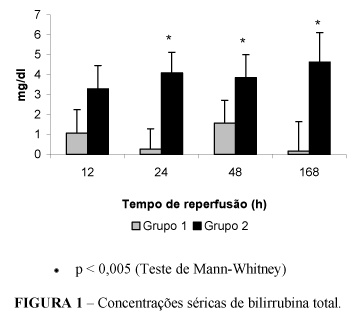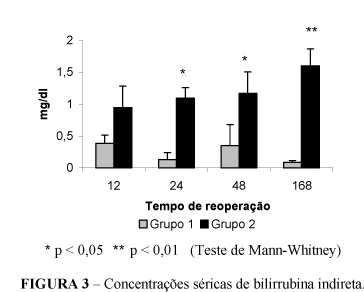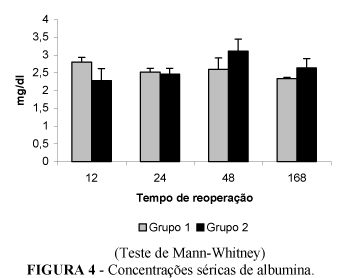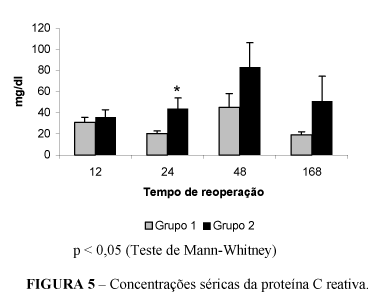PURPOSE: An experimental study has been conducted to investigate the effects of common bile duct obstruction in rats. METHODS: Forty-eight male Wistar rats were distributed into two groups: Group 1 (Control) and Group 2 (Experiment). Each group was divided into 4 subgroups (n=6). Group 1 animals were submitted to laparotomy, dissection and passage of double sutures around common bile duct without ligature. Group 2 rats were submitted to ligation of main bile duct, following previous laparotomy. Blood and liver samples were collected 12, 24, 48 and 168 hours later. RESULTS: Serum bilirubin concentrations (total, direct and indirect) were significantly increased (p < 0.05) in 24, 48 and 168 hours subgroups (Group 2 rats) when compared to Group 1 (control) animals. C reactive protein concentrations were significantly increased (p < 0,05) in experiment in subgroup 24 hours. Albumin and gamaglutamil transferase concentrations were similar in both groups. Histological examination of liver disclosed duct hiperplasia, pericholangitis and pericholangitis. CONCLUSIONS: Common bile duct ligation, in Wistar rats, leads to increased serum concentrations of billirubin, C reactive protein and alkaline phosphatase. Ductal hyperplasia, cholangitis and pericholangitis are the main histological findings in rats subjected to common bile duct ligation.
Bile duct obstruction, extrahepatic; Cholestasis; Models, animal; Rats








